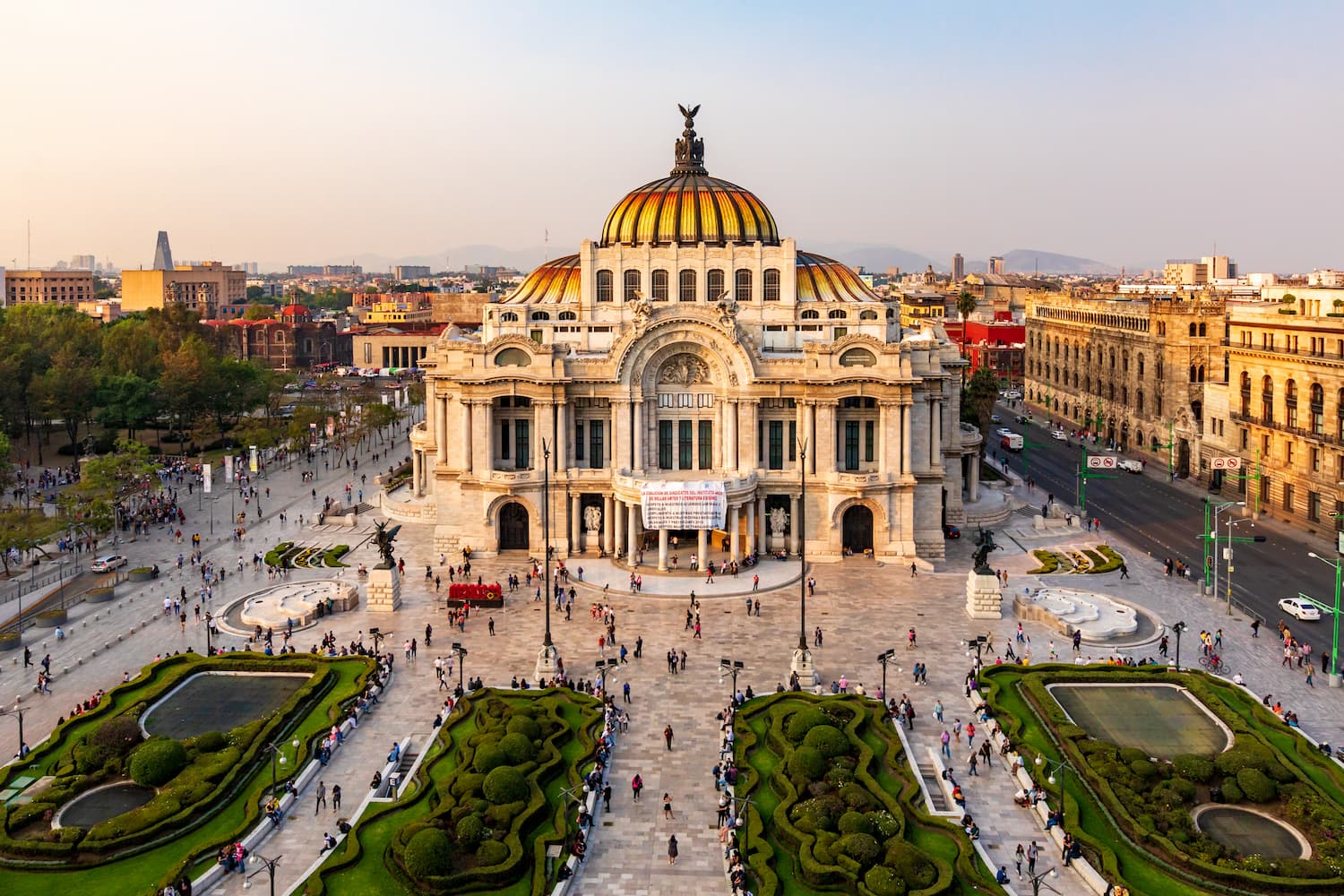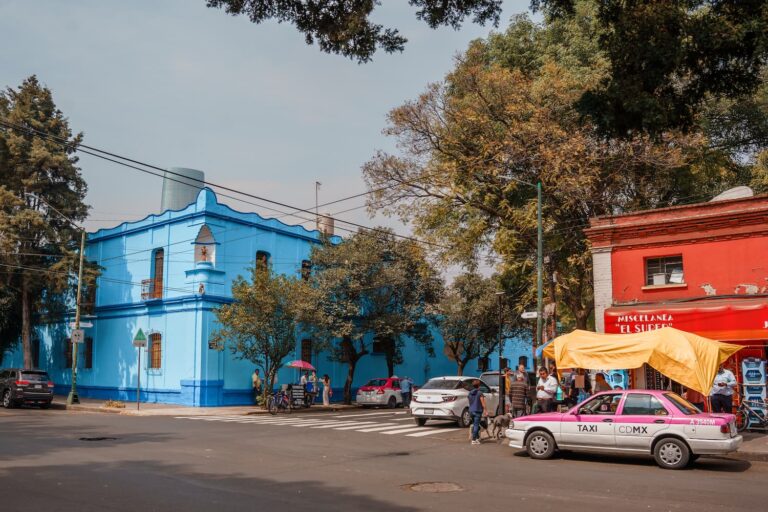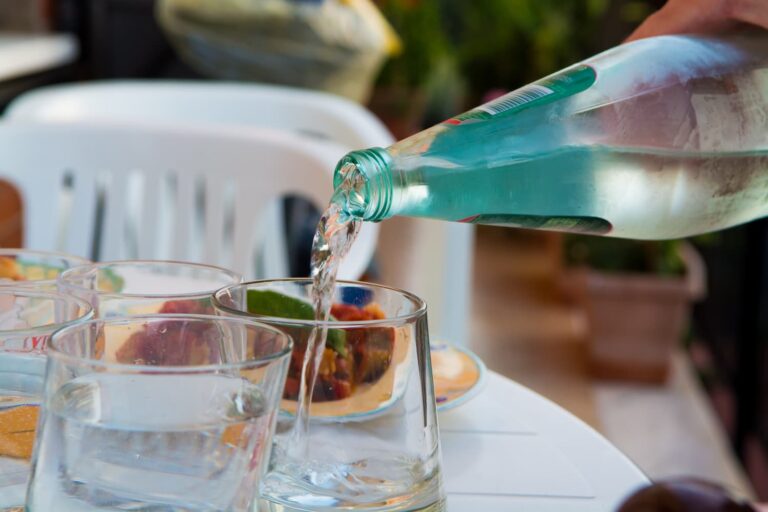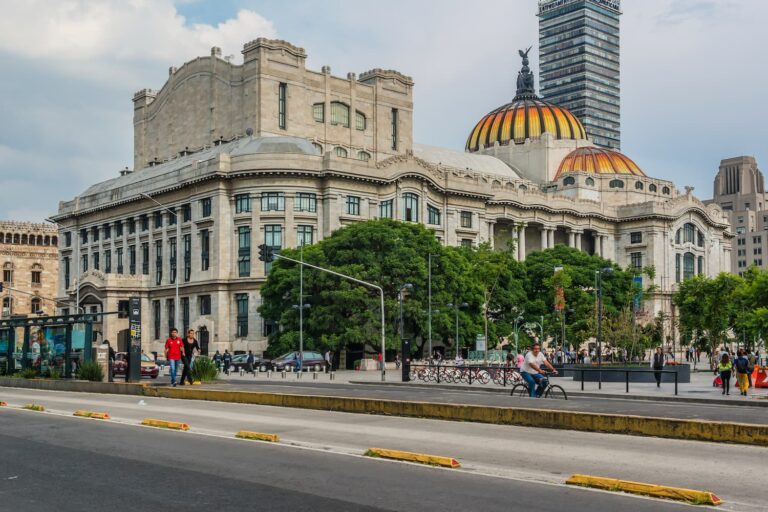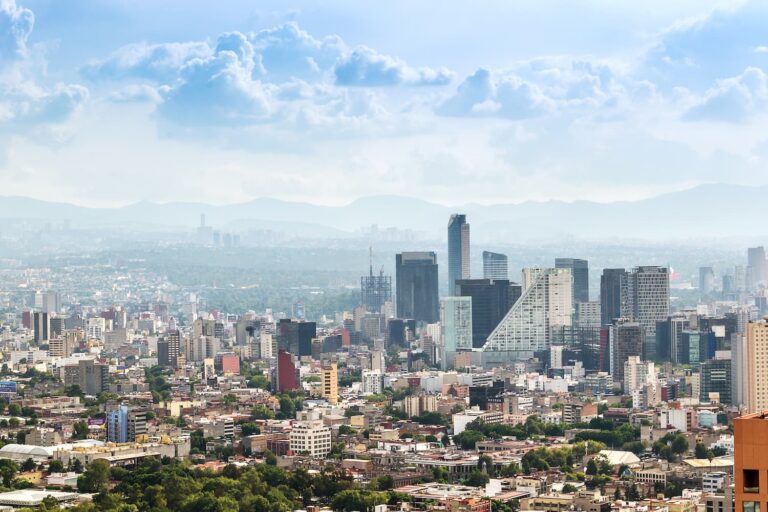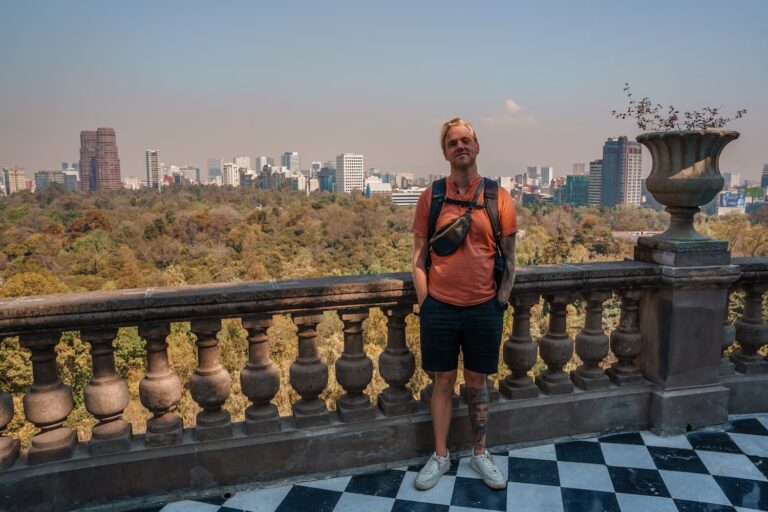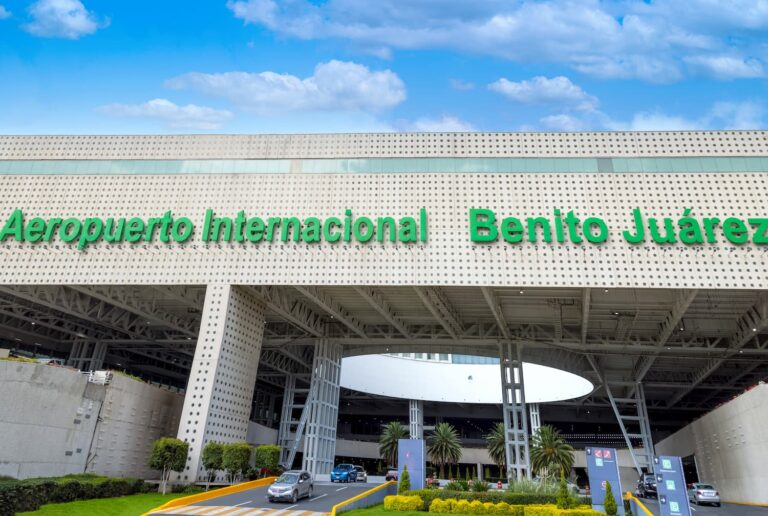Is Mexico City Safe? Your Safety Guide For An Amazing City Trip

Are you asking yourself the question, “Is Mexico City safe?”
Mexico doesn’t have the best reputation when it comes to safety, but don’t be put off! There are several places in the country that you can visit without a qualm, and one of those is the nation’s capital, Mexico City, a bubbling, exciting, delicious melting pot of culture, cuisine, and history.
We visit Mexico regularly, often staying in CDMX for at least a couple of weeks, so we’ve got plenty of experience of the different neighbourhoods and the diverse vibes each barrio has to offer. Thanks to our extensive trips, we have a solid knowledge about the safe parts of Mexico City, as well as how to avoid getting caught out by everything from taxi scams to food poisoning.
In this article, we’ll answer many questions concerning safety in Mexico City, among them: is the Mexico City airport safe, is downtown Mexico City safe, and is Uber safe in Mexico City? If you’re desperate to find out the best places to stay and the areas you should avoid at all costs, dive in!
Is It Safe To Visit Mexico City? Our Experience
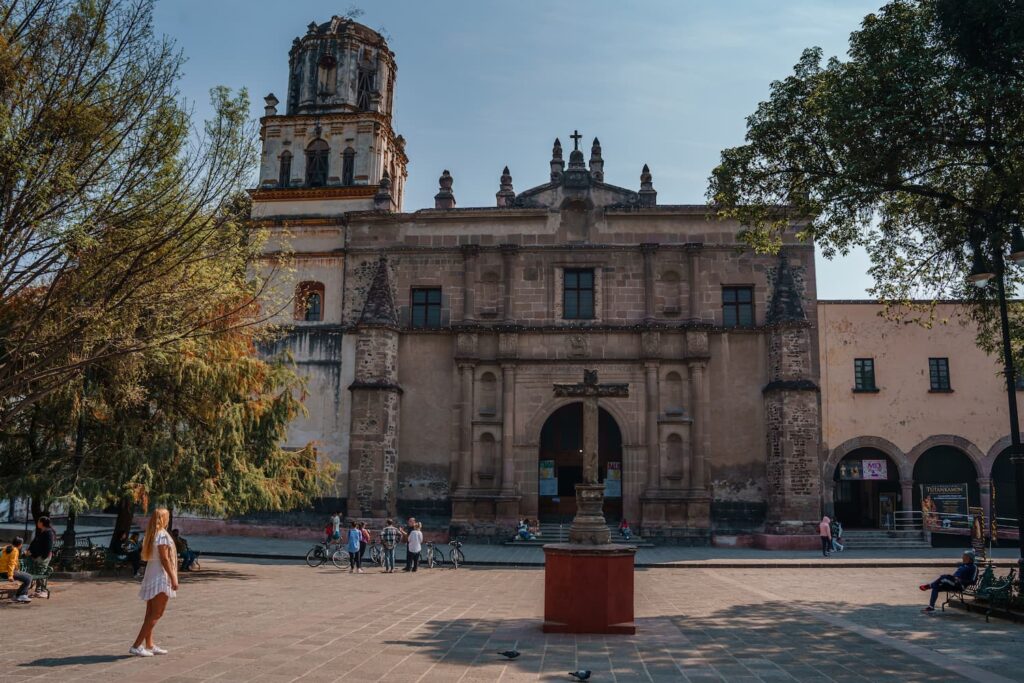
We’re going to go into lots of detail about staying safe in Mexico City in this post, but before we do, we’ll briefly summarise our overall impressions of the capital.
On our first trip to CDMX, we stayed on Calle Palma Norte in the downtown sector, just a couple of streets north of the Zocalo (main square), and we wouldn’t advise it. During the day, it’s absolutely fine – after all, both the elaborate cathedral and pre-colonial ruins of the Templo Mayor are here, so there are lots of tourists. At night, on the other hand, it’s un poco dodgy.
The northeastern parts of CDMX can also be a little more ropey. When we popped into the area around Basilica de Guadalupe, for example, we definitely didn’t feel as comfortable as we do in most places around the capital.
In contrast to that, we always feel very safe in Condesa, where we stayed on our most recent trip. This side of town, along with Roma, is trendier and has a friendlier vibe than the Zocalo and its surroundings.
Artsy Coyoacan and upmarket Polanco are also lovely districts that are completely different in character but equally safe to walk around at most times of day, so keep them in mind when booking accommodation.
7 Helpful Tips For Staying Safe In Mexico City
Regardless of which parts of the Mexican capital you visit, there are a handful of things you can do to ensure you have a worry-free stay in CDMX.
#1 Use reliable transportation
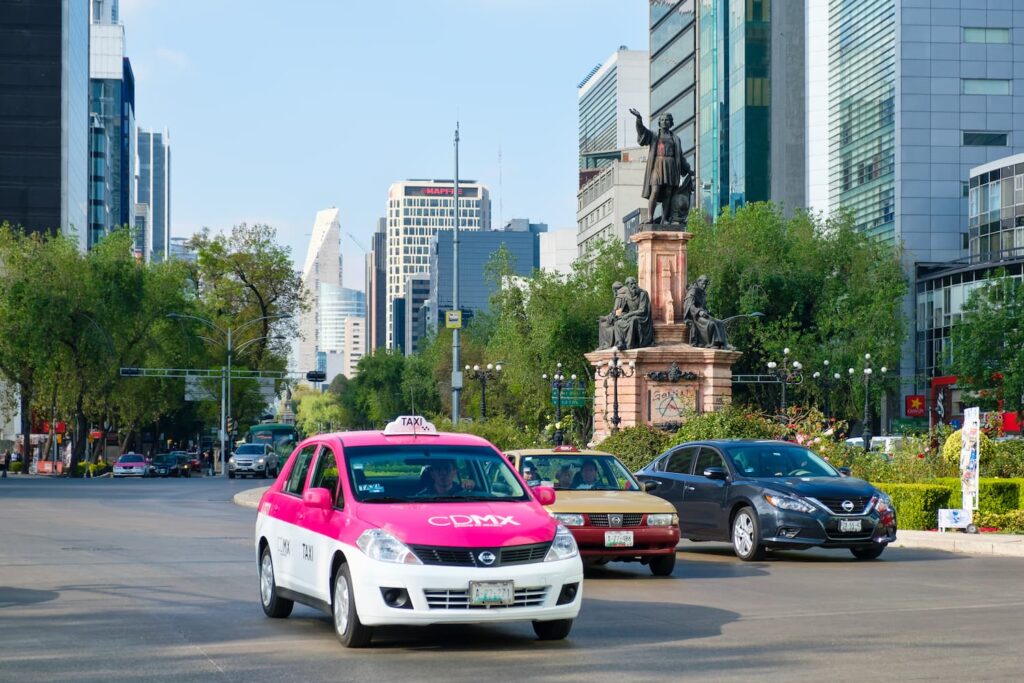
Uber and its main competitor, DiDi, are both reliable methods of transportation in CDMX. As with using a ride-hailing app anywhere in the world, it’s important to maintain a little bit of awareness, such as checking your driver is following the app’s suggested route, but we have never experienced any problems so far.
The metro is also dependable, though you might want to avoid this form of transport during the morning and evening rush hours (roughly 6 am to 9 am and 6 pm to 9 pm) when people pack into the carriages like sardines. It’s also obviously a greater pickpocketing risk to travel when people are pushing up against you, so keep your wallet and phone in a secure place.
Generally, we avoid taking cabs. There are safe taxis in Mexico City if you arrange for one through the official kiosks at the airport, but most of the time, it’s better not to risk a taxi trip due to the potential for scams and even assault.
#2 Stay in safe areas
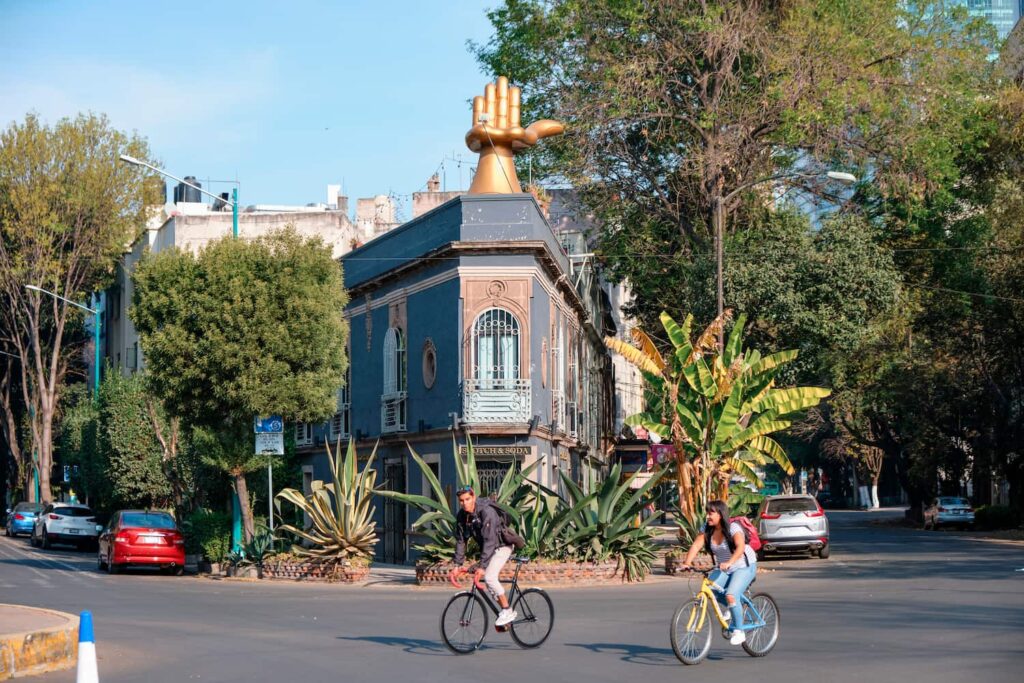
Like most massive metropolises, there are dangerous places and safe places in Mexico City. Despite the Mexican capital’s reputation, you don’t need to worry more than you usually would when travelling, as long as you avoid a handful of questionable areas.
We’ve gone into more detail a bit further down, but the short version is that you are staying pretty much anywhere in La Condesa, Roma, Polanco, Coyoacan, and Santa Fe, which guarantees a comfortable stay.
On the other end of the spectrum, Gustavo A. Madero, Tepito, Doctores, and Iztapalapa tend to be sketchier parts of town. Plus, we would also stay away from Centro Historico outside daylight hours, just because the atmosphere tends to nosedive a little once the sun goes down.
#3 Be cautious with your belongings
Pickpocketing is a common hazard of CDMX, just as it is in many big cities across the world. Paying a little bit of attention to your surroundings, particularly in crowded tourist areas, will help you avoid any unpleasant surprises when you return to your hotel room or Airbnb, such as the fact that your brand-new iPhone has disappeared from your pocket.
You can also purchase anti-theft products from speciality brands like Pacsafe that are designed to confound thieves and keep your belongings secure.
#4 Buy a local SIM card
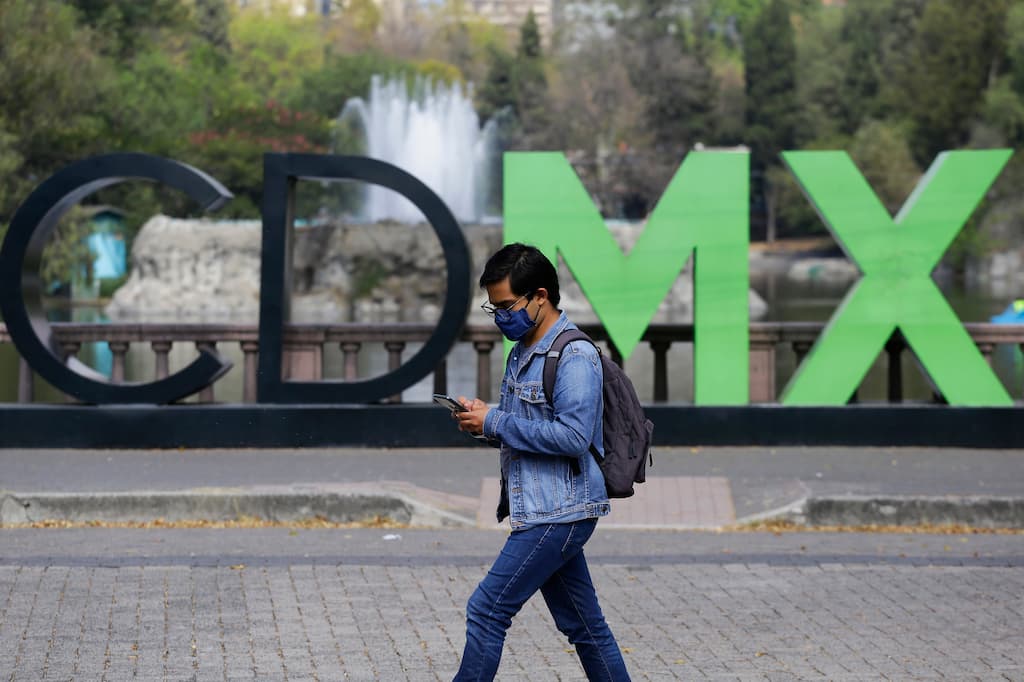
Having access to mobile data on your smartphone makes life so much easier wherever you travel.
First off, it makes moving about a new city simpler, as you can use Google Maps or other equivalents to plot your public transportation route from point to point. Second, you can quickly head to a search engine to look up any things you might have forgotten to check beforehand, such as some simple Spanish phrases or the correct tipping practices.
It’s also essential to have a local SIM card if you plan to use Uber to order cars so you can track that the route taken by the driver is correct.
The reality is that you don’t want to be relying on Wi-Fi in CDMX to access the internet, and access to the internet can be a lifesaver. Of course, your data plan may include free international roaming in Mexico, in which case you’re all set!
If you do need to purchase a SIM, it’s a fairly simple, inexpensive process that can be easily accomplished. Telcel is the largest provider with the best coverage, but it’s also the most expensive, so it’s up to you if you want to try and shop around for a package. While it might seem easier to pick up a SIM before travelling, the better deals are usually to be found once you arrive in CDMX, in places like OXXO stores.
#5 Don’t wander at night
It’s never a good idea to wander about a strange city once the sun goes down, particularly if you’re not sure whether you’re in a safe neighbourhood.
On one of our first trips to CDMX, we popped out one evening just to pick up some essentials from a nearby Chedraui grocery store and ended up following Google Maps into a very dodgy neighbourhood. Luckily, nothing really bad happened, but it certainly encouraged us to be more careful afterwards!
In unfamiliar locations, it’s best just to order an Uber instead and save yourself any potential unpleasantness. After all, it’s very affordable in the Mexican capital!
#6 Stay away from drugs
Is Mexico City safe to visit if you don’t behave safely? Of course not.
Not to sound like an afterschool special, but it’s really risky trying to score in a city you don’t know, especially in a place that is so closely associated with organised crime cartels.
It’s also worth noting that while Mexico is on the path towards the legalisation of cannabis, as has been well documented in the news, the legislation has not yet been passed, so you can still find yourself getting in trouble with police for possession of, or attempting to purchase marijuana.
#7 Get travel insurance
Sure, we all hope nothing will go wrong on holiday, but it’s nice to have the security of insurance so that if worst comes to worst, you know that you aren’t going to have to pay through the nose in the case of an emergency.
While travel insurance isn’t compulsory for anybody visiting Mexico as it is in some countries, we’d suggest having some form of health coverage at the very least in case you are hospitalised for any reason.
Is Mexico City Safe For Travel?
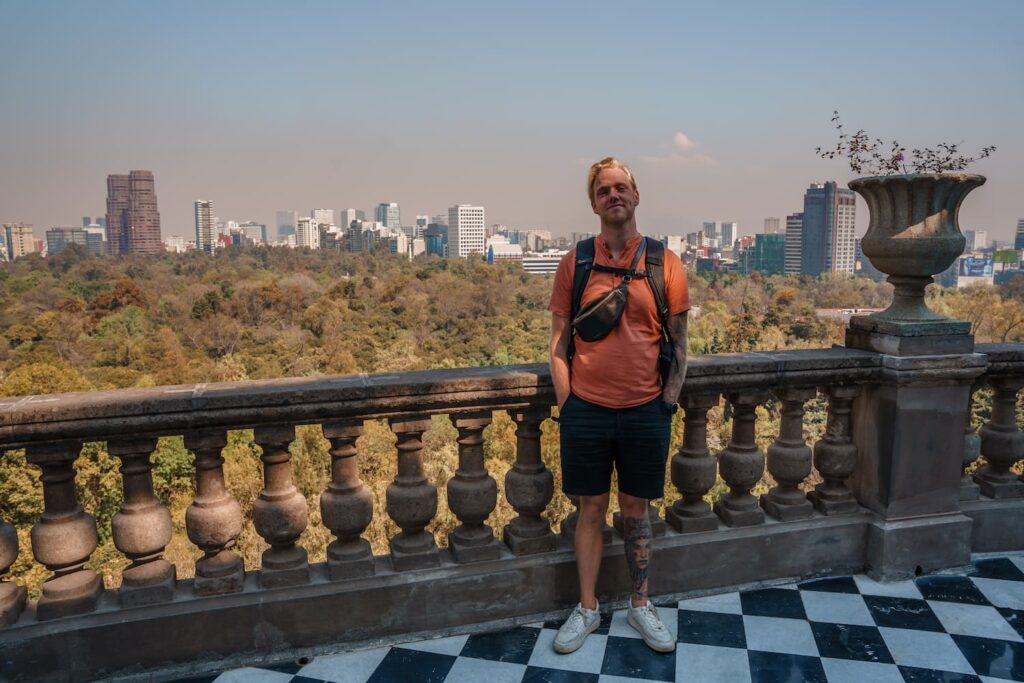
Mexico City is safe for all kinds of travellers as long as you take the relevant precautions.
Is Mexico City safe for tourists?
Yes, Mexico City is safe for tourists. In fact, 3.8 million international visitors flew into the capital’s airport last year, according to official government statistics. We’ve been coming to Mexico for a few years now, and we’ve never had any serious incidents during that time.
Is Mexico City safe for solo female travellers?
Is Mexico City safe to travel to alone as a woman? Overall, yes. Mexico has a pretty bad reputation when it comes to the treatment of women, but policies like having female-only carriages on the metro have helped reduce harassment in recent years.
Of course, as a solo female, you should always remain vigilant, as you would anywhere in the world, and never walk about at night unless you’re in a group.
Is Mexico City safe at night?
No, and yes. We generally wouldn’t recommend going out at night, and certainly not as a solo female traveller. That’s especially true in neighbourhoods that might seem safe during the day but become seedy and chaotic in the evenings. On the other hand, we do feel comfortable going out at night in some neighbourhoods, as we’ll explain below.
What Are The Safest Neighbourhoods In Mexico City?
Rather than asking, “is it safe to go to Mexico City?” a better question might be “What are the safe neighbourhoods in Mexico City”? Here, we’ll take you through the places you can feel most at ease.
#1 La Condesa
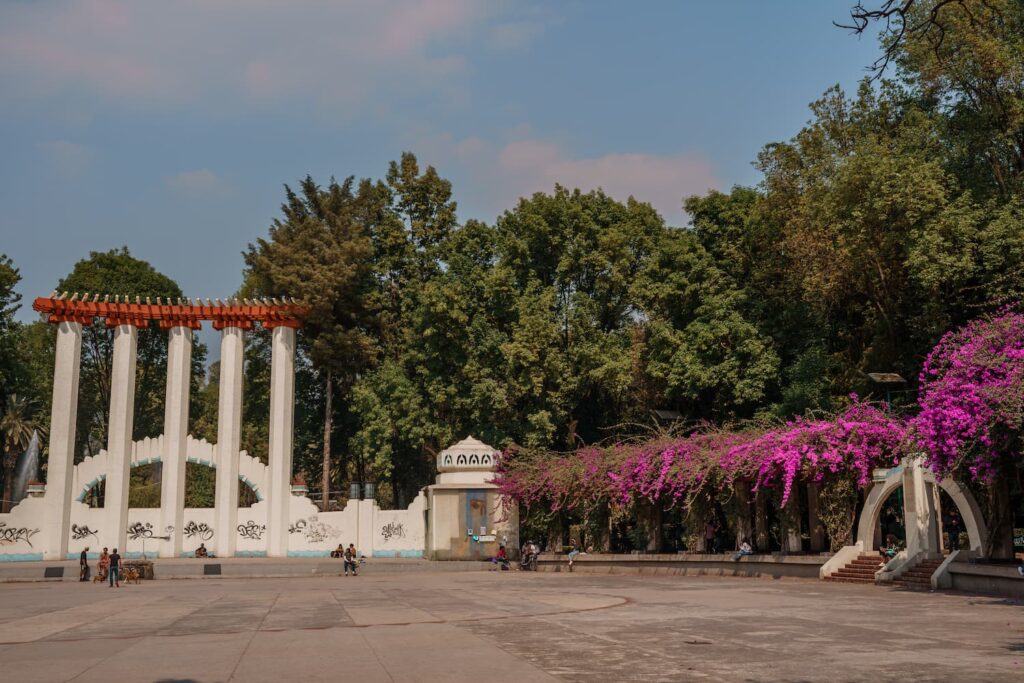
Safe neighbourhoods in Mexico City don’t come much better than La Condesa. One of the capital’s trendiest spots, it’s situated to the west of the centre and is made up of tree-lined avenues that feel completely trouble-free all day and late into the evenings. We usually base ourselves in La Condesa and often go out at night and always feel safe.
That’s good news for anyone who enjoys a mezcal cocktail or two because there are some excellent bars to try out at night!
During the day, the casually cool sidewalk cafes that dot the district are relaxing places to hang out. Alternatively, head to the Bosque de Chapultepec, which lies just to the northeast, for a lovely bit of nature. We particularly enjoyed a soothing paddle on the lake.
To sum up, is Condesa Mexico City safe? Yes, 100%.
#2 Roma
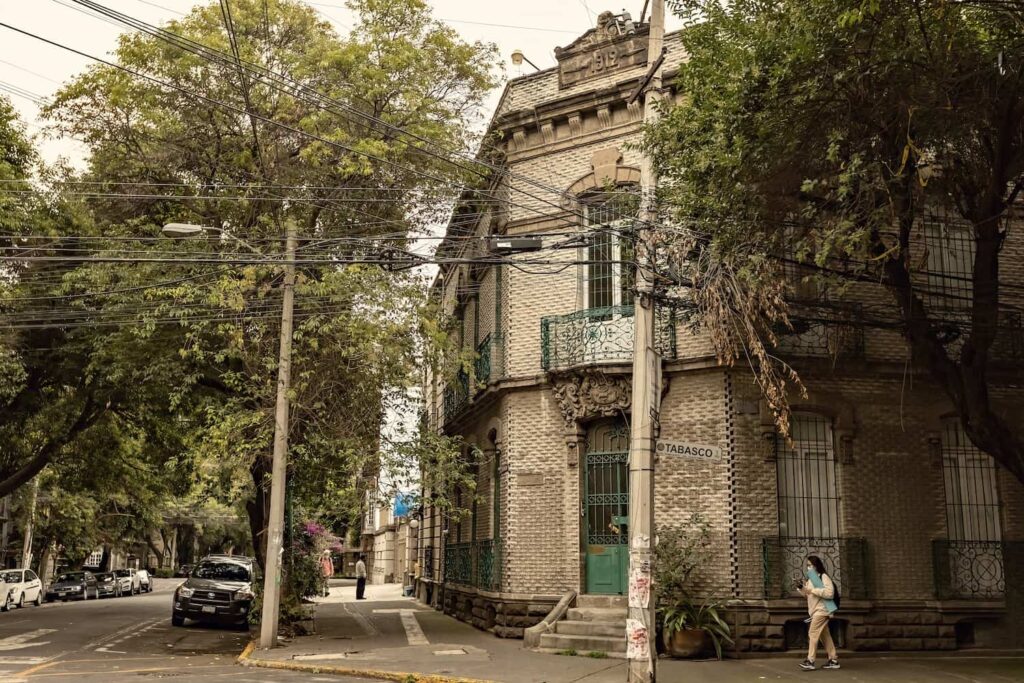
Just to the east of Condesa, Colonia Roma is actually made up of a couple of distinct areas, including Roma Norte and Roma Sud. While the whole district is very safe, Roma Norte is known for being Mexico City’s number-one hipster hangout.
Like Condesa, it’s filled with trendy bars and restaurants, as well as boasting a couple of food markets where you can try a whole lot of different eats and drinks under one roof – Mercado Roma is especially cosmopolitan.
There are also a lot of interesting little art galleries you can pop your head into for a glimpse of the modern art scene or just wander about gazing at the colourful street art.
#3 Polanco
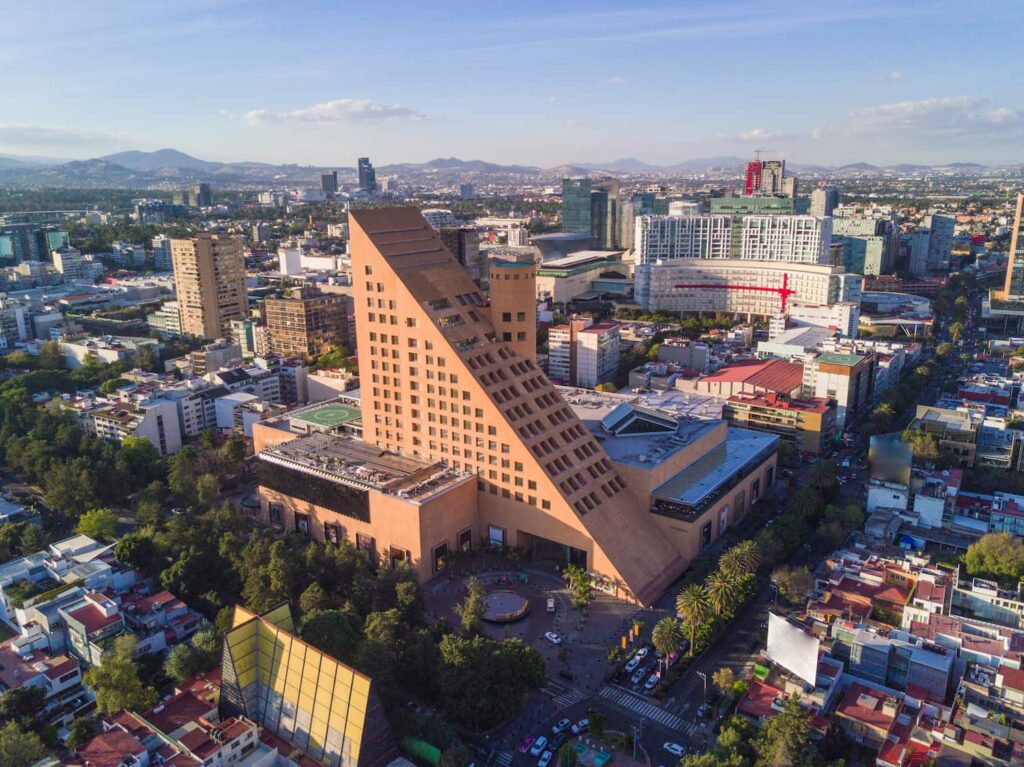
Is Polanco Mexico City safe, in terms of being as safe as Condesa and Roma? Yes, perhaps even more so because it’s here that the most well-to-do Mexicans live.
The affluent population of Polanco dine at world-topping gourmet establishments like Pujol and Quintonil, shop at boutique designer stores recommended by publications like Goop, and stroll with their prams in the immaculately manicured green space of Parque Lincoln in complete security.
It’s not all about the bling-bling, however. Just on the southern edge of Polanco is an excellent cultural institution, the National Museum of Anthropology, as well as the city’s preeminent performing arts venue, Auditorio Nacional. To the north, meanwhile, is the Museo Soumaya, a striking building that houses more than 66,000 pieces of art spanning pre-Hispanic and modern eras.
#4 Coyoacan
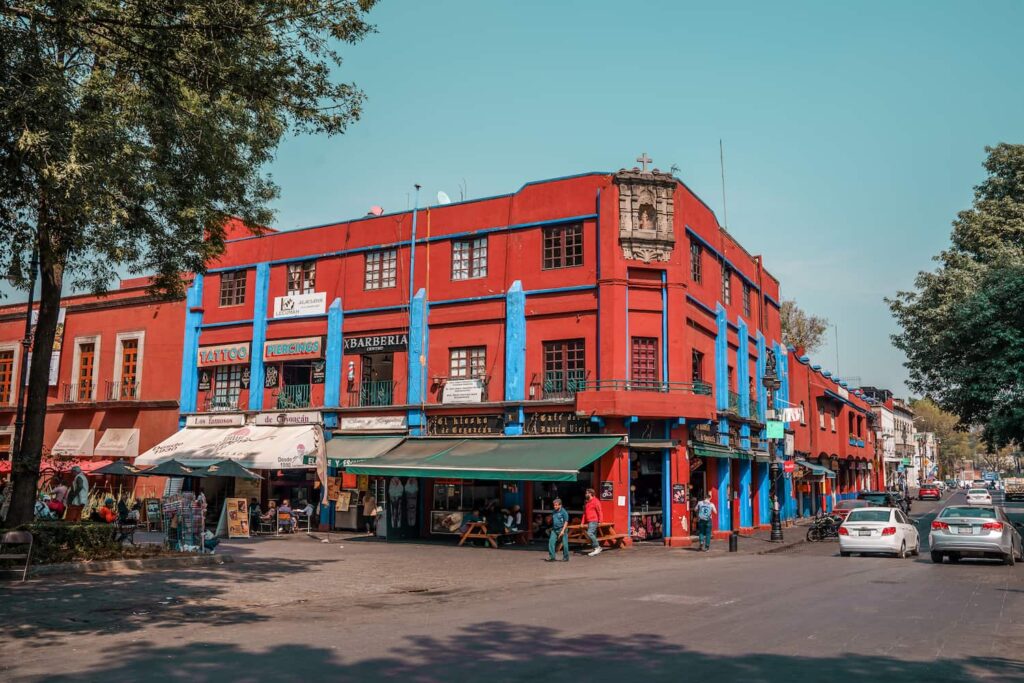
Coyoacan is further away from downtown Mexico City, in a quieter area that is largely residential but with a handful of brilliant attractions, most notably the Frida Kahlo Museum.
Cobblestone streets lined with former colonial homes give it a historical air, but there’s a pretty cool bohemian vibe going on at the same time.
Most visitors stick to Coyoacan proper, which is where you’ll find some great food markets, but the greater area is also very secure if sprawling.
If you have a little more time, dig a bit deeper into the region by visiting the Diego Rivera-designed Museo Anahuacalli and/or University City, a campus containing a representative collection of Mexican architecture and artworks that is so comprehensive and impressive that it was made a UNESCO World Heritage Site.
#5 Santa Fe
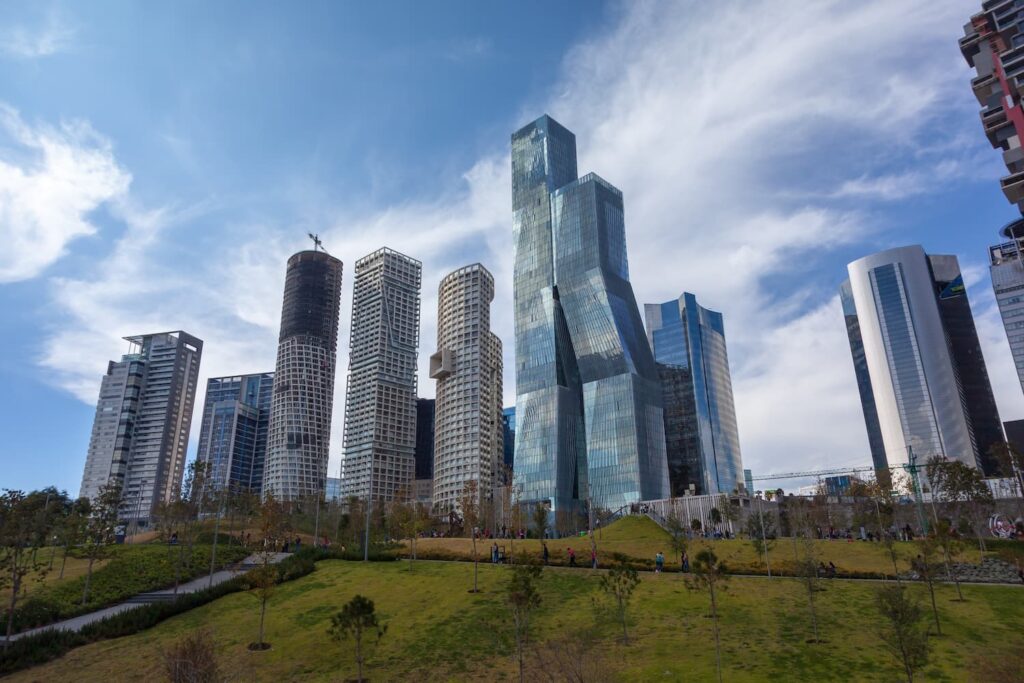
Santa Fe is a relatively tourist-free, safe area in Mexico City, far out to the southwest of the city. This ultra-modern part of town is an interesting project that local authorities started building in the 2000s in hopes of creating a new commercial hub for the city unfettered by existing urban structures.
As a result, there’s a high density of skyscrapers, international hotel brands, and shopping malls, offset by the charming greenery of Parque la Mexicana.
There’s not really much to see for tourists in these parts, and the transport links aren’t the best, but if you want somewhere super safe with excellent amenities, then Santa Fe is a possible option to consider.
5 Areas To Avoid In Mexico City
Now that we’ve covered the safe areas of Mexico City, how about a few places you should try and avoid?
#1 Lindavista (Basilica de Guadelupe) Gustavo A. Madero
We first found ourselves in Gustavo A. Madero because we really wanted to visit the Basilica de Guadalupe and the other striking religious buildings that rub shoulders with it.
What we hadn’t realised before turning up is how dodgy the surrounding area is, mainly because Gustavo A. Madero doesn’t often get discussed as much as some of the other dangerous parts of town. In fact, we later discovered that the district has one of the highest homicide rates in Mexico City.
That’s not to say that visiting the Basilica de Guadalupe itself is dangerous, just that you may want to Uber in and out of the area rather than walking there from the nearest metro station.
#2 Tepito/Garibaldi
Only 20 minutes’ walk from the heart of the Centro Historico, you could easily walk into the part of Mexico City that stretches from Plaza Garibaldi westward to Tepito without meaning to – which is exactly what Robin did on the way to buy some basics at the nearest Chedraui from our hotel.
We wouldn’t recommend it. This is some very dodgy territory. Tepito, in particular, has a long-standing reputation as a shady place to go for black market goods, which are sold from stalls that are packed closely together in a suffocating mass.
#3 Doctores
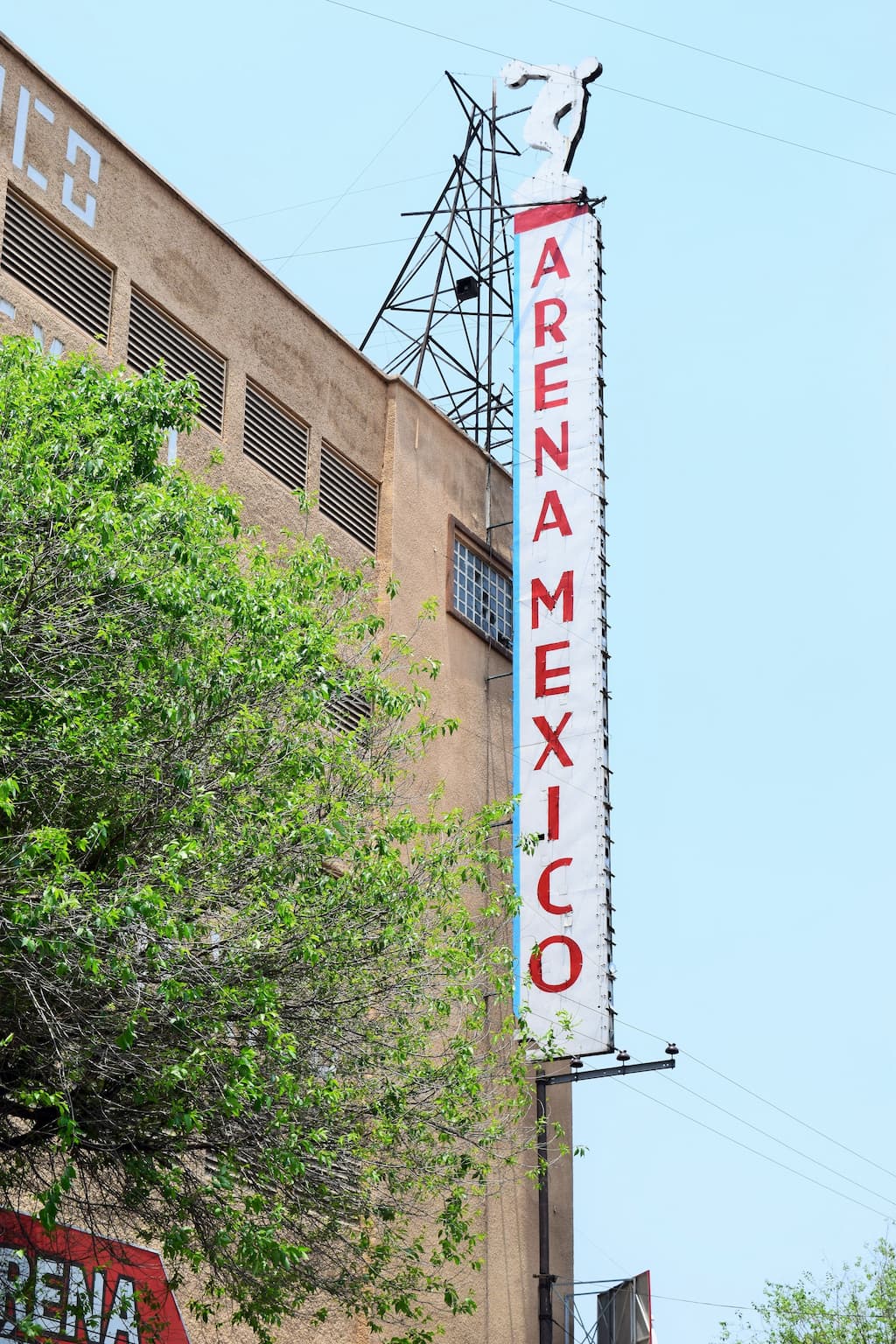
We’re often struck by how close some of Mexico City’s seediest areas are to some of its safest. Doctores is just east of Roma, and its most famous attraction, the Arena Mexico, where people go to watch luchadores wrestle one another in dramatic fashion, is just a street away from upmarket Roma Norte.
Perhaps it’s the lucha libre itself that attracts the crooks, but for whatever reason, Doctores doesn’t feel safe, particularly at night. So, while you should, by all means, come for the wrestling – a unique Mexican experience – don’t stick around after the show for your nightcap, but head west into Roma Norte.
#4 Iztapalapa
Iztapalapa is a huge, heavily populated area where murder and sexual assault are tragically common. Of course, given the size of the district, that’s a pretty big generalisation across a massive geographic area, and there are undoubtedly some parts that have a more vicious reputation than others.
Having said that, unlike Doctores with its Arena Mexico or Gustavo A. Madero with its Basilica de Guadalupe, Iztapalapa really doesn’t have anything that a tourist would want to see, so there’s really no reason at all to risk heading there other than for morbid curiosity.
#5 Centro Histórico at night
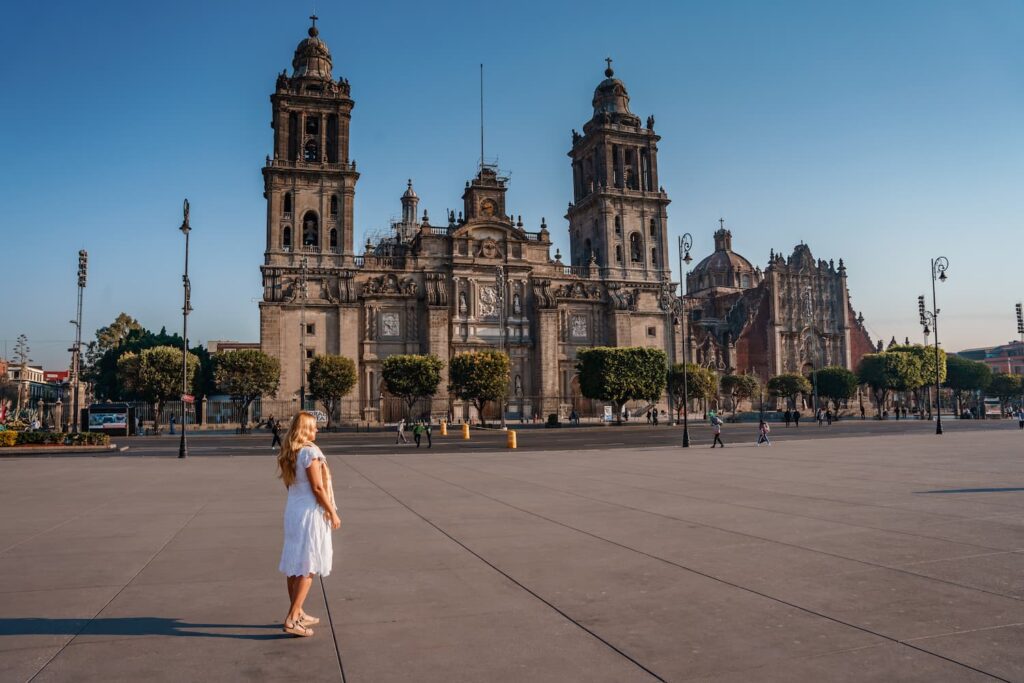
Is it safe in Mexico City centre at night? On one of our earliest trips to the capital, we stayed in the historic district, and it definitely did not feel very secure once the daily tourist crowds had dispersed and the homeless people had settled in for the evening.
To put it in perspective, the Centro Histórico at night isn’t in the same danger league as, say, Tepito or Iztapalapa, but it’s a far cry from an enjoyable evening spent in Condesa or Roma.
If you do end up booking a hotel around the Zocalo and are a bit of a night owl, we’d recommend hopping in an Uber and heading west to Roma-Condesa for an hour or two rather than spending your time in the slightly shady streets of twilight Centro Histórico.
Safest Ways To Travel In Mexico City
There are lots of different ways to get around Mexico City, but some are safer than others. Here, we’ll discuss a few of the better options.
Going on organised tours
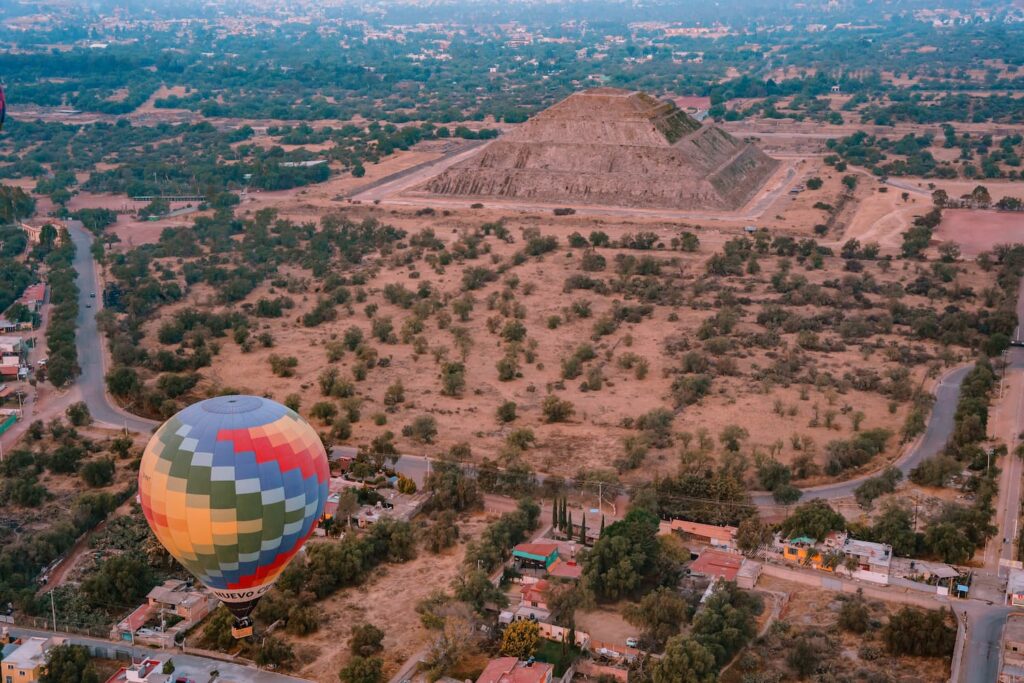
Going on a well-reviewed tour is a sure-fire way to have a stress-free experience. Not only does it mean you don’t have to worry about navigating transport, but it also means that you can defer to your local guide’s expertise when it comes to what items to shell out for and what items to avoid, like the plague.
Plus, travelling on a tour ensures you won’t get hassled as much by touts or have to go through the headache of negotiating with locals on prices. For example, we found it much easier to just go on a tour to the canals of Xochimilco rather than visit on our own and haggle with boatmen at the dock for a berth.
Is Uber in Mexico City safe?
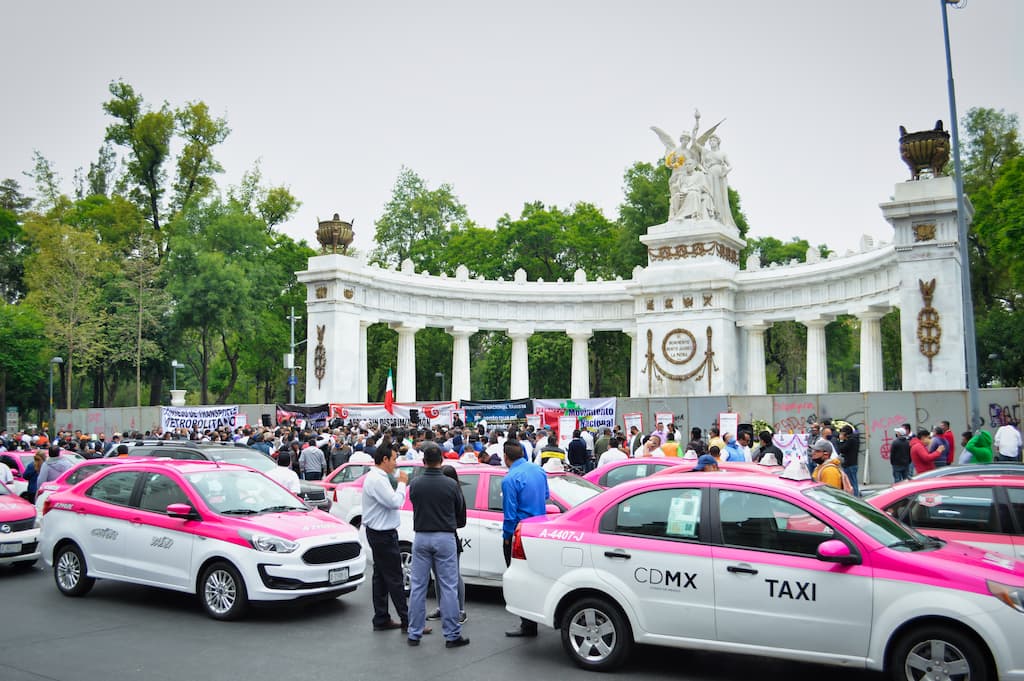
Uber in Mexico City is about as safe as it is anywhere in the world. Of course, you should always have your wits about you, but on the whole, it’s an incredibly affordable, incredibly convenient way to traverse the city in relative comfort.
Thanks to features like having the licence plate and rating of your driver at your fingertips before embarking, as well as being able to track your journey live, you can feel pretty secure in the knowledge that your ride will be pain-free – aside from having to endure the sometimes-unbearable CDMX traffic, of course.
Is it safe to walk around Mexico City?
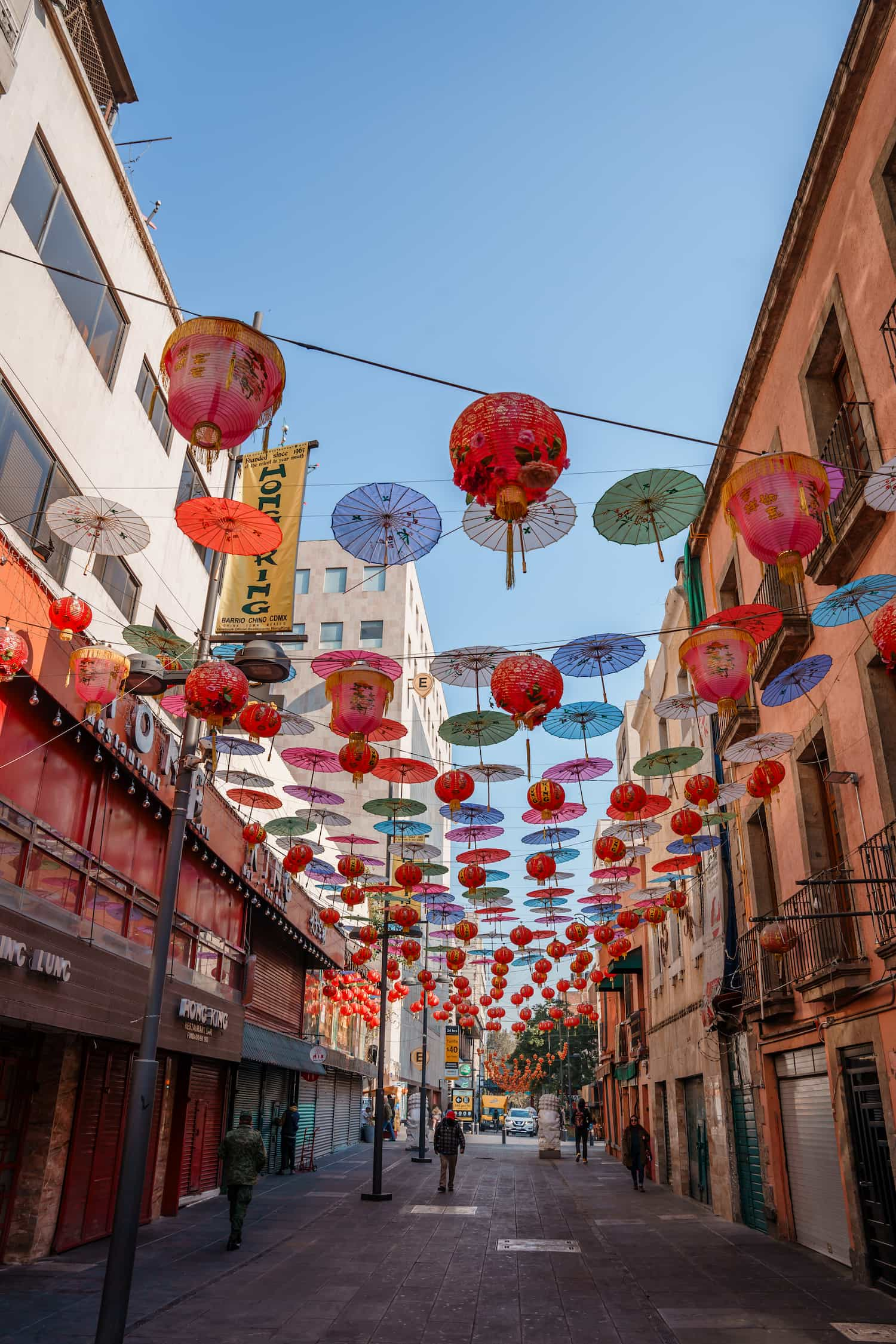
Yes, in most of the touristy areas, it is safe to walk around during daylight hours. It does, however, depend a lot on what part of Mexico City you are exploring.
We’ve already gone through the areas we think are most comfortable to explore on foot, as well as the areas we would strongly recommend you avoid. In general, it’s not advisable to follow Google Maps down quiet side streets, even around areas such as the Centro Historico or parts of town just off the Paseo de la Reforma.
Is the Mexico City metro safe?
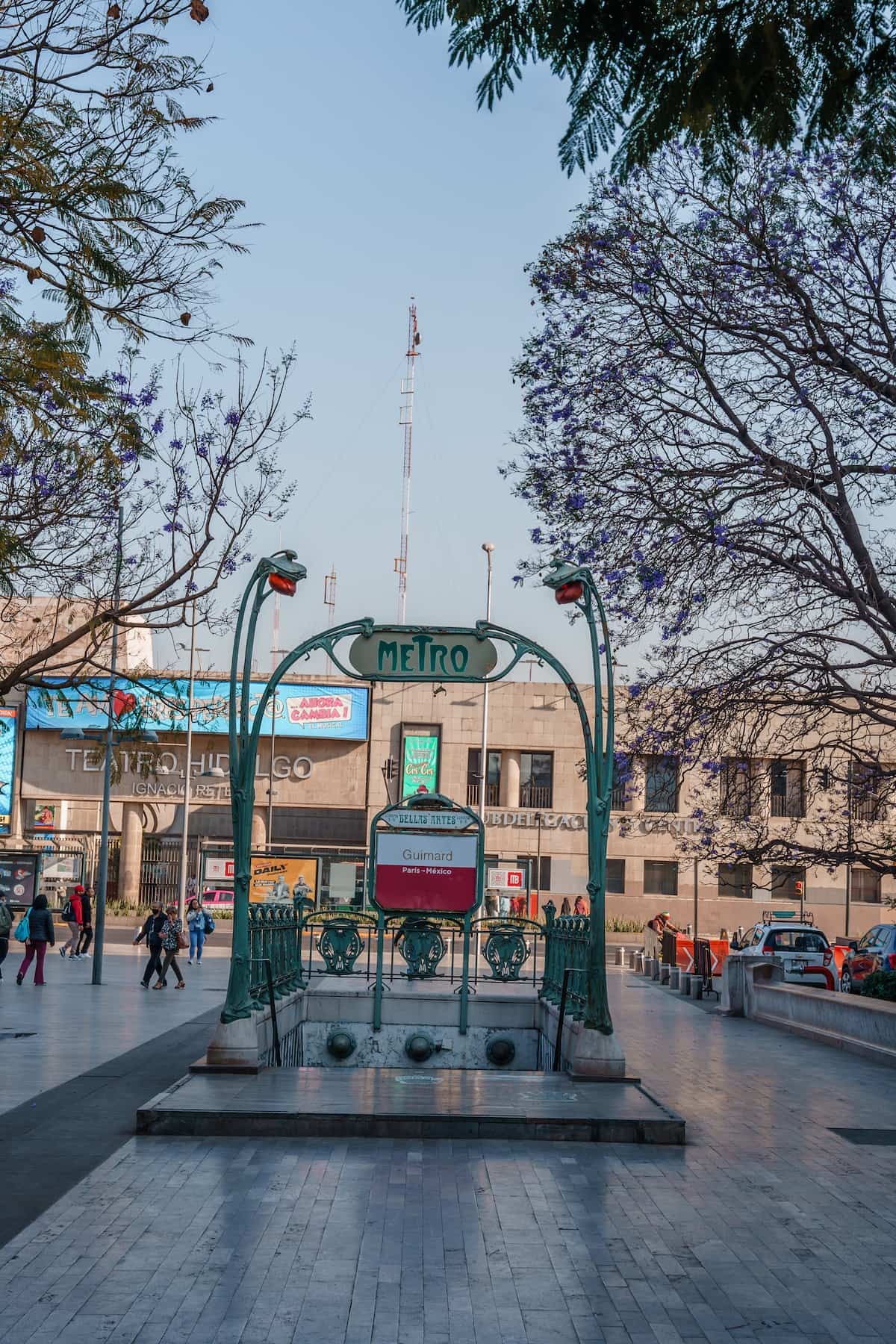
Finally, is Mexico City metro safe? Overall, we’d say yes. It’s also very cheap (5 pesos a ticket) and very convenient to a lot of the most common attractions.
Personally, we wouldn’t take it very late at night when people can get a bit leary, though that is sadly the case with a lot of places around the world, as is the risk of pickpocketing.
The metro does tend to get very crowded during rush hour periods, which can be a bit of an uncomfortable experience. This discomfort is avoidable, though, with just a minor amount of forward planning.
Is Mexico City Airport Safe?
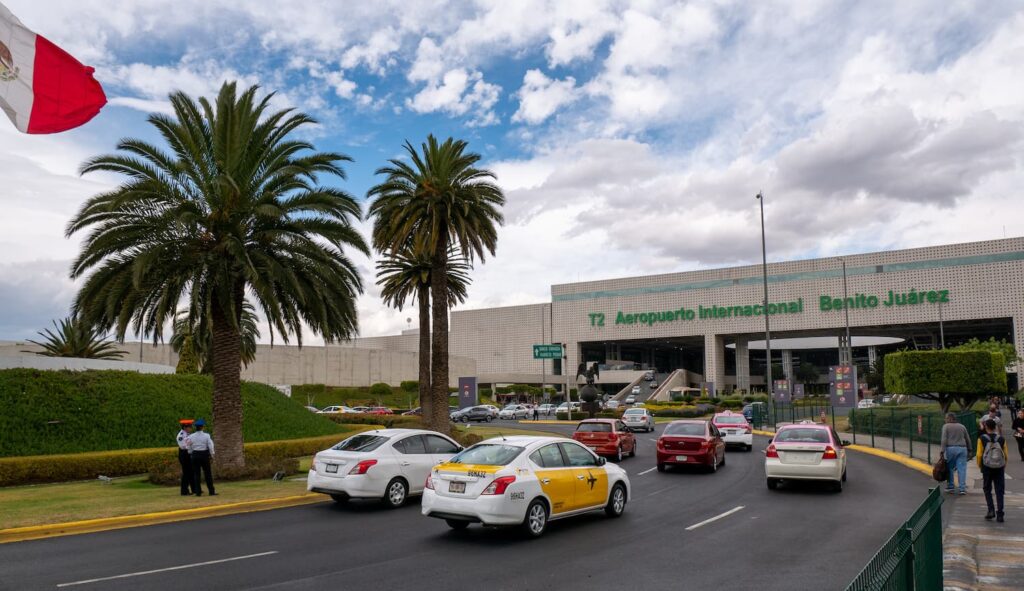
Yes, Mexico City International Airport (aka Benito Juárez International Airport) is safe. There is plenty of security in evidence, and the worst you will encounter is petty crime like someone making off with an unwatched piece of luggage – though, to be honest, even that level of risk would be in line with what you’d expect at any airport, rather than being something that’s more likely to happen in CDMX.
However, one thing you should watch out for is when you leave the airport and are confronted by a flurry of drivers trying to get you to ride in their car. Do not take a cab this way, as you are liable to encounter all manner of scams.
While you can catch a taxi from the airport to your accommodation, there is a particular process to go about it.
First, find a taxi kiosk within the airport. Tell the attendant at the kiosk your destination, and they will quote you a fare. If the amount seems reasonable to you (as a very rough guide, the cost should be about $15-17 US or 250 to 300 pesos), you prepay your fare at the kiosk.
Once that’s done, you will be given a taxi ticket, which you then take outside to the official taxi rank associated with the kiosk and give to a driver. You shouldn’t need to give the driver any money for your fare as it’s already been paid at the kiosk, though you may opt to give a little tip (10 or 20 pesos) if the taxi operator helps you with your luggage. BUT THAT’s IT!
Is Mexico City Safe To Live?
Yes. As long as you select one of the better parts of town for your stay and act sensibly, particularly at night, you really shouldn’t have any problems.
If you’re wondering is Mexico City safe for expats who want to live here longer term, the answer is also yes. The Mexican capital is one of the most popular places in the whole country for digital nomads to settle, as they are attracted by the access to wide-ranging amenities and the relative glut of English speakers.
Natural Disasters In Mexico City
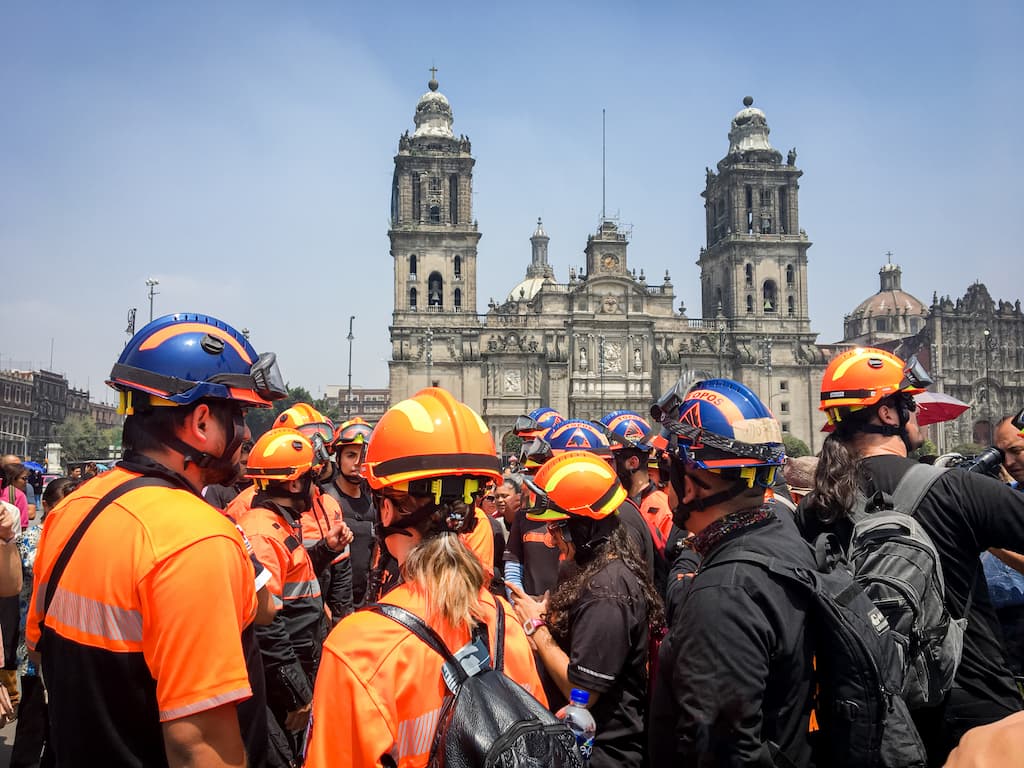
Mexico, in general is prone to the occasional earthquake, and Mexico City itself experienced a relatively minor series of tremors just last year in 2022. While there was little serious damage or major loss of life at that time, a previous earthquake in 2017 killed more than 200 people in CDMX, so it’s something to have in the back of your mind when planning a holiday.
Eruptions from the Popocatépetl volcano have also caused trouble in the past, affecting flights in and out of the airport.
On the whole, however, Mexico City suffers less than other parts of the country from the natural disasters that are known to afflict the country regularly, such as hurricanes and floods.
Is The Water In Mexico City Safe To Drink?
The short answer is no. The water in Mexico City is not safe to drink. The more complicated answer is that there are places you could drink the water without ill effects, but it varies hugely by location, and since it’s not really possible to know where your water is coming from precisely, there’s no point in risking your health – or, for that matter, your holiday!
While the water that flows into Mexico City is generally purified and cleaned at the source or in large water treatment plants, it then flows through a plumbing system that can sometimes be rusty or contaminated by bacterial substances.
Obviously, you wouldn’t necessarily expect that at top-notch five-star hotels, some of which even have their own fancy filtration systems, but in general, safety is not guaranteed. That’s why, overall, we wouldn’t recommend drinking straight from the tap.
Instead, bottled water is the way to go, and it’s not hard to find. In fact, Mexico is the world’s number one for per capita consumption of bottled water. That’s why you’ll frequently see trucks driving around Mexico City that is loaded with enormous 20-litre water dispensers (called garrofones), providing purified aqua to people’s homes while simultaneously collecting used water containers for sterilisation and re-use.
There are a whole bunch of other things to consider, however, when it comes to answering the question, “is water in Mexico City safe to drink?” We’re going to cover all of them here, from coffee drinking to ice cubes.
Can I brush my teeth with tap water in Mexico City?
You probably won’t get sick from brushing your teeth with tap water in Mexico City, as even if you do swallow some liquid, it will only be a small amount. Having said that, why risk it?
Play it safe and use bottled water to brush and rinse for the duration of your stay. We, however, never do that, and so far, we have never got sick.
Is it safe to drink coffee in Mexico City?
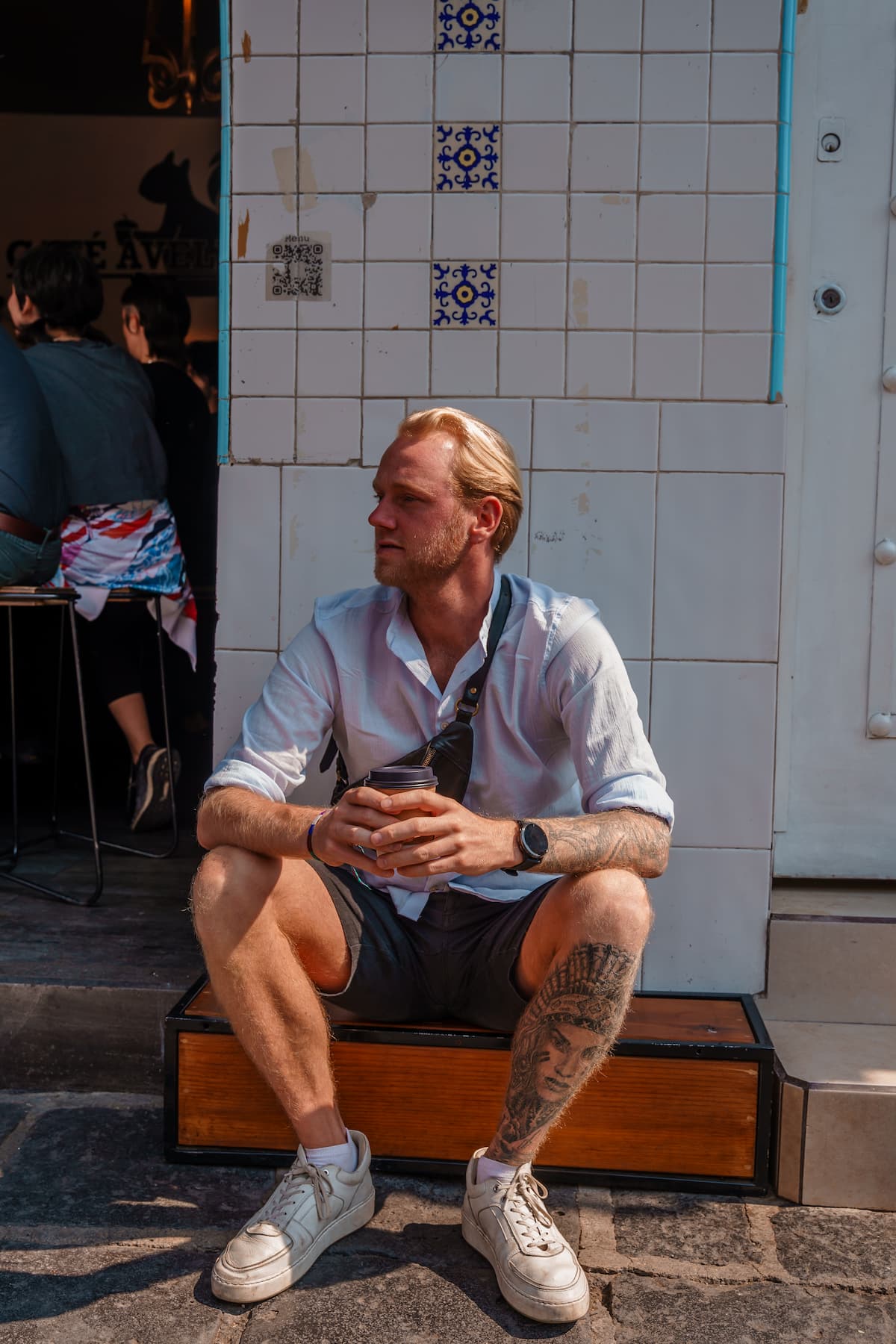
We’ve never had a problem drinking coffee in Mexico City, regardless of whether it’s made using bottled or tap water.
If you want to play it safe, however, make sure any tap water you plan on using to make coffee is boiled for at least five minutes before brewing your caffeine fix.
Is it OK to have ice in Mexico City?
Unfortunately, ice is one of those things that can be pretty risky, especially when you’re drinking out someplace, as you have no idea whether the ice has been made with tap water or bottled water – and you definitely don’t want to risk it with tap water.
We wouldn’t worry about the source of the ice if you’re dining in an upmarket hotel or restaurant, but beyond that, things get a bit dicier. Even though most Mexicans will use bottled water to make their ice cubes in their homes, there’s no assurance that’s what’s happening behind the scenes at your neighbourhood taqueria.
Is eating in Mexico City safe?
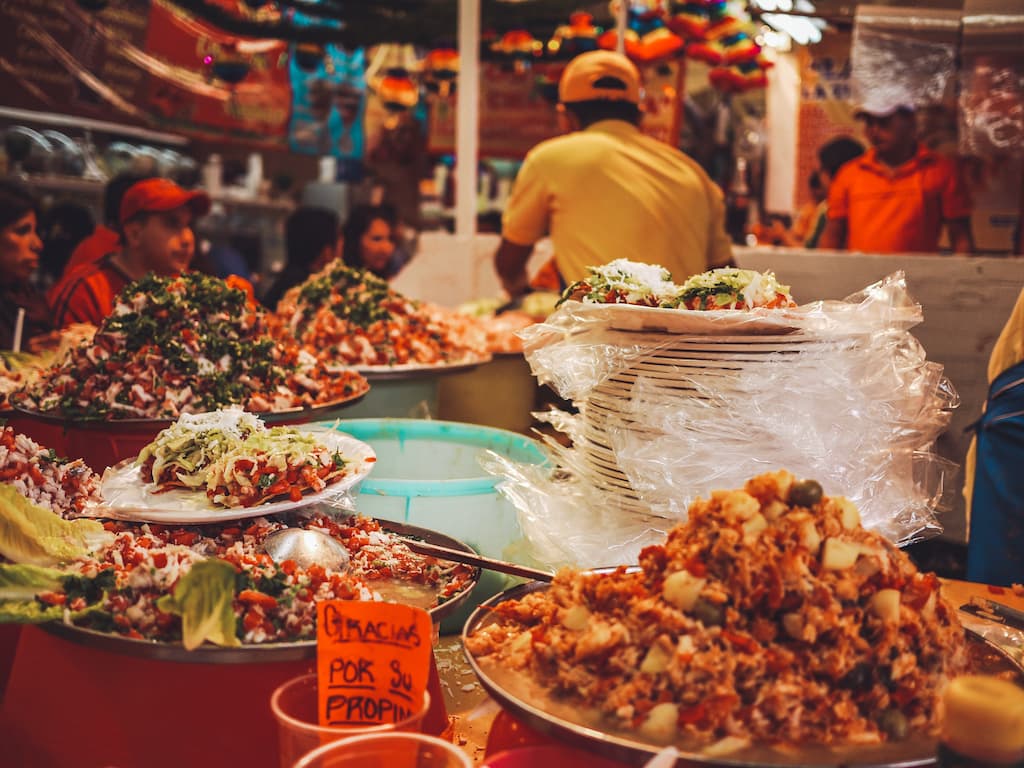
Most of the time, you can feel confident about eating out in Mexico, even at street food stalls, just so long as they seem to be popular with locals. You should also consider only going to places where the food is clearly being freshly prepared, rather than sitting around.
The only you want to be a little more careful with are things like raw salad and fruit since any bacteria will still be alive and kicking.
What is the most common food poisoning in Mexico?
One of the most common items that cause food poisoning in Mexico is the salsas you’ll see at street food stalls and on tables at fast-food-style eateries. That’s because these often sit out for a while without getting used up.
Then again, they can be delicious! For the best of both worlds, our advice is not to avoid them wholesale but to do your research beforehand as to whether a place has been well-reviewed for cleanliness.
Is Mexico City Safe? FAQs
Is Mexico City safe for Americans?
Is Mexico City safe for US citizens? In short, yes, though the US government does advise Americans to exercise increased caution due to crime while visiting Mexico City, particularly at night. The State Department also notes that petty crime is a common affair in both touristy and non-touristy areas.
Is Day of the Dead in Mexico City safe?
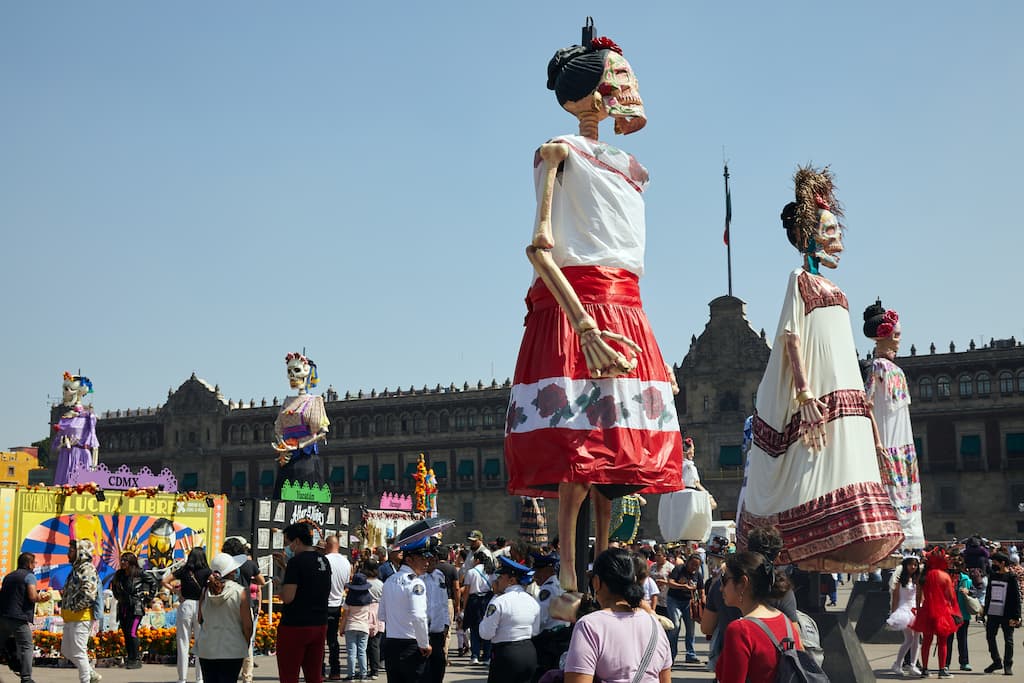
The Day of the Dead is one of Mexico’s most popular festivals, so it’s understandable that a lot of people want to visit during the time of year when it occurs (November 1 and November 2). While Mexico City is certainly livelier and busier during the celebration, it’s not noticeably more dangerous.
Are taxis safe in Mexico City?
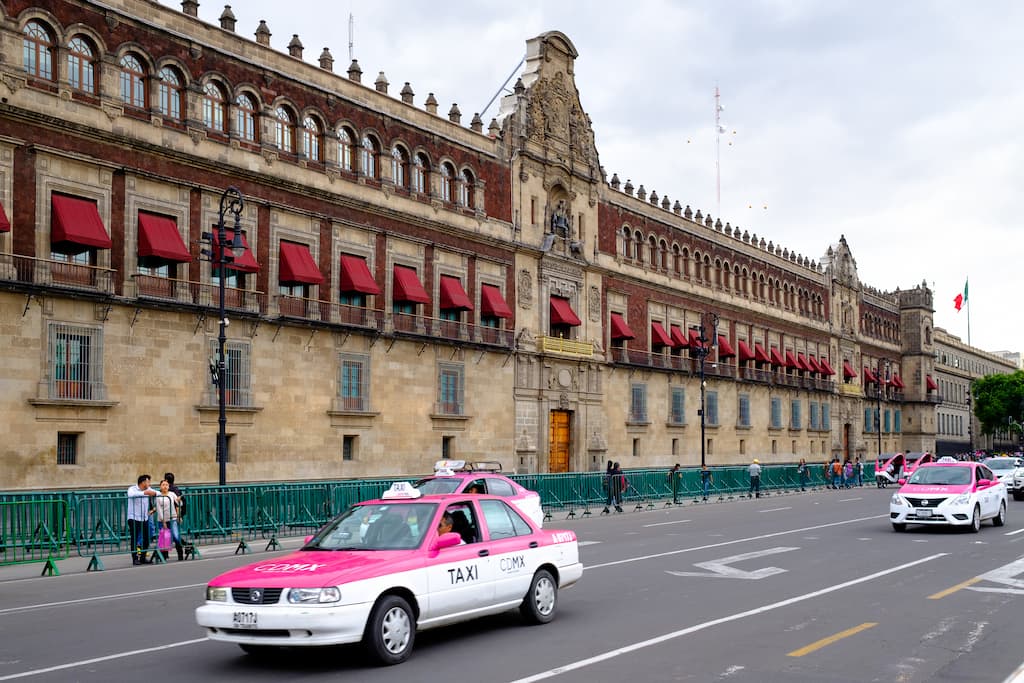
No. We don’t recommend taking taxis in Mexico City. They are notorious for scams and are generally unsafe for travellers, especially women. The only place where it is usually OK to take a taxi is at the airport, as long as you order it through the taxi kiosks in the terminal, which take your payment beforehand.
Are the ATMs in Mexico City safe?
We’ve never experienced any issues using an ATM in a bank building in Mexico City, but it always pays to be cautious by making sure there aren’t any suspicious devices attached to the machine. That’s especially true since there have been well-documented cases of card skimming and other fraudulent practices in Mexico.
Is Airbnb safe in Mexico City?
Generally, yes. The first thing to check is the ratings and reviews of any property before you book, as that will help weed out some obvious red flags. The other thing to check is the location of the Airbnb. Try to stay in one of the safest neighbourhoods that we’ve listed above.
Is Mexico City a dangerous city?
Many of the most dangerous cities in the world are located in Mexico, but Mexico City isn’t among them. In fact, the capital’s crime rate has gone down significantly over the past decade. On a more anecdotal level, we wouldn’t rate Mexico City as a particularly dangerous city compared to many of the places we’ve visited.
Is it worth going to Mexico City?
Yes, it is definitely worth going to Mexico City! The capital has some amazing things to see, including the Zocalo, where the Mexico City Metropolitan Cathedral and the ruins of Templo Mayor are situated; the Bosque de Chapultepec, with its expansive parkland and lake; and Coyoacan, with the Frida Kahlo Museum. And don’t even get us started on the food!
Do I need travel insurance for Mexico City?
Travel insurance is always a good idea. At the most basic level, you should choose a package that will cover emergency medical expenses, but it’s also advisable to opt for a deal that covers lost baggage and travel disruption, as these are pretty common annoyances we come up against as frequent flyers.
How do you call the emergency number in Mexico City?
Just like in the US, the emergency number in Mexico is 911. Bear in mind that there’s no guarantee that the operator who fields your call will speak English (or any other language, for that matter), so you may need the assistance of a Spanish speaker.
Is Mexico City Safe?: Conclusion
So, is Mexico City a safe city? The bottom line is that it’s no more dangerous than lots of other cool, urban places worldwide. With just a few basic precautions and a simple understanding of the capital’s geography, you’ll have all the info you need on how to be safe in Mexico City.
MORE CDMX TRAVEL GUIDES:

